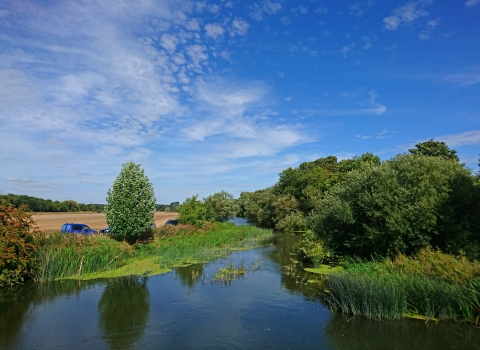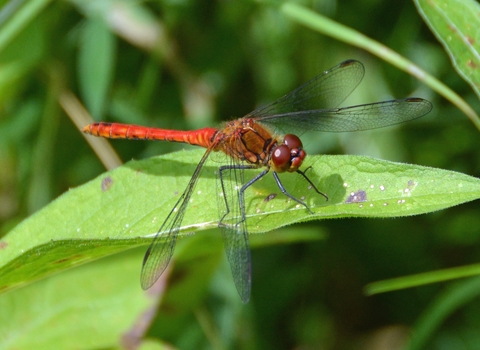The founding of the Beds and Hunts Naturalists’ Trust stretches back over six decades - and Felmersham Gravel Pits in Bedfordshire was their first reserve - they have both turned 61! Celebrations were in order to mark the grand occasion.
When gravel was extracted towards the end of the Second World War, little did people know that they were creating what would become a superb wildlife habitat. Decades on and a rich mosaic of woodland, grassland and open water has developed - the lakes are one of the best places for dragonflies and damselflies in Bedfordshire, with no fewer than 18 species known to have bred. The nearby Great Ouse brings in even more species, with adults hunting over the water and grassland.
Helping to mark the founding of the Beds and Hunts Naturalists’ Trust, former BCN CEO Nick Hammond was present to cut the fabulous dragonfly cake - kindly made/donated by Victoria White Cake Design - and to remember pivotal moments from the Trust's evolution. Long serving volunteer wardens Cliff Dean and Dick Allston received special mention - Cliff started working at Felmersham in 1971 and became volunteer warden in 1978, spanning almost five decades.
CEO Brian Eversham said: “I'd like to thank our founding forebears for their enthusiasm in setting up the Beds and Hunts Naturalists’ Trust, and their wisdom in safeguarding some really special places - not only Felmersham, but Totternhoe Knolls, Upwood Meadows, Brampton Wood – which have sustained rare species like musk orchid, bladderwort, green-winged orchid and black hairstreak butterflies to this day.
“As conservation focusses more on ‘landscape scale’ or ‘rewilding’, it’s easy to overlook the vital role of even our smallest nature reserves – but if the small places don’t retain rare and threatened species, they will not be able to colonise the new habitats. Since 2000, we’ve been creating bigger, better-managed and joined-up nature reserves. The Great Fen – also in Huntingdonshire - was the first Living Landscape of all the Wildlife Trusts, and appropriately, it’s focussed on the very first ‘wildlife trust’ reserve, Woodwalton Fen, saved by Charles Rothschild in 1910.
“The need for the work of the Trust is arguably even greater now, in the face of climate change and development pressures and we’re not stopping. Our founders would have been surprised by the changes in local wildlife: the loss of tree sparrows and corn-marigolds, the return of buzzards, kites and ravens, and the arrival of egrets, Cetti’s warblers - and a range of new dragonflies and damselflies. New species will use our reserves, and some habitats will change as the climate changes - but the reserves remain vital refuges and stepping stones, helping wildlife adapt to climate change and preventing local extinctions just as they did 61 years ago.
“We changed our name from ‘Naturalists’ to ‘Wildlife’ which has helped broaden our appeal - our founders would never have expected us to have over 36,000 members across the three counties. Many of us are still naturalists at heart, and good quality natural history, ecology and monitoring - and the richest training programme for new naturalists in the country - still underpin our work, as it did from the early days.”








